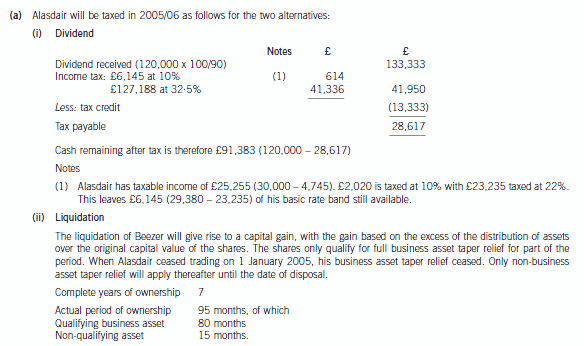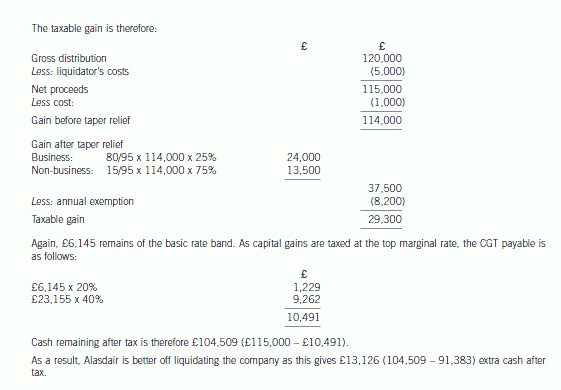ACCA考试F5通关技巧!
发布时间:2019-01-04
ACCA考试是一条相当漫长的旅程,想要抵达终点并不容易。还在旅途上的考生们,你们不要也不要太心急,脚踏实地一步一个脚印才是获取最终果实的方法。一篇F5通关技巧送给你们,希望对你们有所帮助。
复习篇
对于F5的复习,小编总结了几个要点。
首先,一定要以真题为重。
历年习题一定要多做几遍,哪怕时间不够,也要翻看完一遍。做的时候要以逻辑为重,仔细体会学习官方答案的行文逻辑。因为官方的答案不仅逻辑清晰,最关键的是每一个得分点都涵盖在内。做的时候要记下自己的答案并且与官方答案做对比,找出自己易错的点,并且标出来,有空就复习巩固。
计算题
计算题最重要的是建立框架,而不是具体的知识点。当然知识点的记忆也是越多越好,但要分清主次。框架和格式是答题的基础,有框架在,任何题都能比较自信的着手。框架建立好之后,就要开始揣摩出题思路了。可以把历年真题找出来,分析每到题目,找出出题规律和考察的知识点,并做好笔记。另外一点是多练,俗话说熟能生巧,只有不断的保持在大量做题的状态,考试时才能内心风轻云淡。
文字题
文字题最重要的是看清题目,找出题目中的动词,“and”之类的连词,分清是转折还是承接关系。文字题其实也需要多练,有人会说记住官方答案以后套用就行,但问题是记忆效率如何。光是阅读答案像背课文那样去背,效果不一定好,俗话说好记性不如烂笔头,最好的办法是多写。隔一段时间就练一遍错题,将自己的答案与官方答案对照,这样比直接背官方答案记得更牢。
高分秘诀
其实考试考到最后,还是考查复习的全面度。每个人其实都复习的不错了,拉开差距的是那些复习不到的点。平时上课时总结过的,和自己做题时遇到的一些历年考试还没考过的,或者近几年没考过的知识点,一定要特别记录下来。有空就多看,查缺补漏。可能就因为这样一个两个知识点,让你在成绩上甩开了全国98%的用户。
考试篇
走上考场之后,和平时做题状态大不一样了,考试时也要讲究方法。
时间分配
基本思路是,根据分值来分配每道题需要的时间。遇到棘手的题可以适当跳过,一般读完两遍题目还没有思路的情况下可以直接跳到后面的题,如果后面的题很容易,就可以先完成后面的题再回来做之前卡住的题,如果后面的题很难,那至少后面的题分值更大,可以挤出时间拼一下分值大的题。
答题技巧
首先在阅读时要顺手把关键词圈出来,把临时想到的答题思路用关键词写在空白处。这样之后正式书写的时候就有了大纲了。假如考到最后时间不够了,也不能空题,最好的处理办法是将关键词和要点按顺序罗列出来,这样可能得一部分分数。至于要点,就靠从题目中提取了,问什么答什么,问一点答一点。
心态
ACCA是一场持久战,考试科目多,时间跨度长,能取得最后的胜利的必然都是强者,所以随时都要以强者的标准来要求自己。作为强者,首先要做到坚持到底。要知道任何时候放弃考试,之前所做的全部努力都会付诸东流,行百里者半于九十,既然决定要考证,那就一定要全部通过。
其次是处理负面情绪。作为考证人首先要学会屏蔽来自周围事情对心情的影响,不能因为生活琐事而打乱复习节奏。有时候一件小事可能会让自己想要找个人吵一架,但一想到吵架会浪费我复习时间,如果没考过一定会后悔复习时没抓紧,这样一想气就自然消了。
当然,对于考生来说,最影响的士气的倒不是来自外界,而是考试本身。假如一科没有考过,很容易陷入自我怀疑,不知道自己哪里做错了。这种时候就一定要告诉自己,反正最终结果是一定要拿到证书的,过程曲折一点,问题不大。没过肯定有没过的原因,找到原因,下次弥补好就能通过了。
下面小编为大家准备了 ACCA考试 的相关考题,供大家学习参考。
(d) Evaluate the circumstances in which a government can act as an aid to business performance. (5 marks)
(d) Governments may act as an aid to business performance in the following ways:
– A government can increase aggregate demand for goods and services by increased government spending and/or by
reducing taxation so that firms (and individuals) have more after tax income available to spend.
– Government policy may encourage firms to locate to particular areas. This is particularly the case where there is high
unemployment in such areas.
– Government policy via the use of quotas and import tariffs might make it more difficult for overseas firms to compete in
domestic markets.
– A government can regulate monopolies in particular with regard to the prices they charge and the quality of their goods
and services.
– Government policy can regulate the activities of those firms which do not act in the best interests of the environment.
(Alternative relevant discussion would be acceptable)
5 Astrodome Sports Ltd was formed in December 2000 by seven engineers who comprise the board of directors of the
company. The seven engineers previously worked together for ‘Telstar’, a satellite navigation company.
In conjunction with one of the three largest construction companies within their country they constructed the ‘365
Sports Complex’ which has a roof that opens and uses revolutionary satellite technology to maintain grass surfaces
within the complex. The complex facilities, which are available for use on each day of the year, include two tennis
courts, a cricket pitch, an equestrian centre and six bowling greens. The tennis courts and cricket pitch are suitable
for use as venues for national competitions. The equestrian centre offers horse-riding lessons to the general public and
is also a suitable venue for show-jumping competitions. The equestrian centre and bowling greens have increased in
popularity as a consequence of regular television coverage of equestrian and bowling events.
In spite of the high standard of the grass surfaces within the sports complex, the directors are concerned by reduced
profit levels as a consequence of both falling revenues and increasing costs. The area in which the ‘365 Sports
Complex’ is located has high unemployment but is served by all public transport services.
The directors of Astrodome Sports Ltd have different views about the course of action that should be taken to provide
a strategy for the future improvement in the performance of the complex. Each director’s view is based on his/her
individual perception as to the interpretation of the information contained in the performance measurement system of
the complex. These are as follows:
Director
(a) ‘There is no point whatsoever in encouraging staff to focus on interaction with customers in efforts to create a
‘user friendly’ environment. What we need is to maintain the quality of our grass surfaces at all costs since that
is the distinguishing feature of our business.’
(b) ‘Buy more equipment which can be hired out to users of our facilities. This will improve our utilisation ratios
which will lead to increased profits.’
(c) ‘We should focus our attention on maximising the opening hours of our facilities. Everything else will take care
of itself.’
(d) ‘Recent analysis of customer feedback forms indicates that most of our customers are satisfied with the facilities.
In fact, the only complaints are from three customers – the LCA University which uses the cricket pitch for
matches, the National Youth Training Academy which held training sessions on the tennis courts, and a local
bowling team.’
(e) ‘We should reduce the buildings maintenance budget by 25% and spend the money on increased advertising of
our facilities which will surely attract more customers.’
(f) ‘We should hold back on our efforts to overcome the shortage of bowling equipment for hire. Recent rumours are
that the National Bowling Association is likely to offer large financial grants next year to sports complexes who
can show they have a demand for the sport but have deficiencies in availability of equipment.’
(g) ‘Why change our performance management system? Our current areas of focus provide us with all the
information we need to ensure that we remain a profitable and effective business.’
As management accountant of Astrodome Sports Ltd you have recently read an article which discussed the following
performance measurement problems:
(i) Tunnel vision
(ii) Sub-optimisation
(iii) Misinterpretation
(iv) Myopia
(v) Measure fixation
(vi) Misrepresentation
(vii) Gaming
(viii) Ossification.
Required:
(a) Explain FOUR of the above-mentioned performance measurement problems (i-viii) and discuss which of the
views of the directors (a-g) illustrate its application in each case. (12 marks)
(a) Candidates may choose FOUR problems with performance measures from those listed below:
Tunnel vision may be seen as undue focus on performance measures to the detriment of other areas. For example ‘There is
no point whatsoever in encouraging staff to focus on interaction with customers in efforts to create a ‘user friendly’
environment. What we need is to maintain the quality of our grass surfaces at all costs since that is the distinguishing feature
of our business.’
Sub-optimisation may occur where undue focus on some objectives will leave others not achieved. For example, ‘We should
focus our attention upon maximising the opening hours of our facilities. Everything else will take care of itself.’ This strategy
ignores the importance of a number of other issues, such as the possible need to increase the availability of horse-riding and
bowling equipment for hire.
Misinterpretation involves failure to recognise the complexity of the environment in which the organisation operates.
Management views have focused on a number of performance measures such as ‘spend the money on increased advertising
of our facilities which will surely attract more customers.’ This fails to recognise the more complex problems that exist. The
town is suffering from high unemployment which may cause population drift and economic decline. This will negate many
of the initiatives that are being suggested by management. This may to some extent be offset by the good transport links to
the ‘365 sports complex’.
Myopia refers to short-sightedness leading to the neglect of longer-term objectives. An example would be ‘We should reduce
the buildings maintenance budget by 25% and spend the money on increased advertising of our facilities which will surely
attract more customers.’
Measure fixation implies behaviour and activities in order to achieve specific performance indicators which may not be
effective. For example, ‘Buy more equipment which can be hired out to users of our facilities. This will improve our utilisation
ratios which will lead to increased profits.’ Problems of unemployment and lack of complaints from customers may mean that
more equipment will not improve profit levels.
Misrepresentation refers to the tendency to indulge in ‘creative’ reporting in order to suggest that a performance measure
result is acceptable. For example ‘Recent analysis of customer feedback forms indicate that most of our customers are satisfied
with the facilities. In fact, the only complaints are from three customers – the LCA University who use the cricket pitch for
matches, the National Youth Training Academy who hold training sessions on the tennis courts, and a local bowling team.’
This ignores the likely size of capacity share occupied by these three customers. In this regard it should be acknowledged
that complaints represent a significant threat to the business since ‘bad news often travels fast’ and other customers may then
‘vote with their feet’.
Gaming is where there is a deliberate distortion of the measure in order to secure some strategic advantage. This may involve
deliberately under performing in order to achieve some objective. For example, ‘We should hold back on our efforts to
overcome the shortage of bowling equipment for hire. Recent rumours are that the National Bowling Association are likely to
offer large financial grants next year to sports complexes who can show they have a demand for the sport but have deficiencies
in availability of equipment.’
Ossification which by definition means ‘a hardening’ refers to an unwillingness to change the performance measure scheme
once it has been set up. An example could be ‘Why change our performance management system? Our current areas of focus
provide us with all the information that we need to ensure that we remain a profitable and effective business.’ This ignores
issues/problems raised in the other comments provided in the question.
6 Alasdair, aged 42, is single. He is considering investing in property, as he has heard that this represents a good
investment. In order to raise the funds to buy the property, he wants to extract cash from his personal company, Beezer
Limited, whose year end is 31 December.
Beezer Limited was formed on 1 May 1998 with £1,000 of capital issued as 1,000 £1 ordinary shares, and traded
until 1 January 2005 when Alasdair sold the trade and related assets. The company’s only asset is cash of
£120,000. Alasdair wants to extract this cash from the company with the minimum amount of tax payable. He is
considering either, paying himself a dividend of £120,000, on 31 March 2006, after which the company would have
no assets and be wound up or, leaving the cash in the company and then liquidating the company. Costs of liquidation
of £5,000 would then be incurred.
Since Beezer Limited ceased trading, Alasdair has been taken on as a partner at a marketing firm, Gallus & Co. He
estimates his profit share for the year of assessment 2005/06 will be £30,000. He has not made any capital disposals
in the current tax year.
Alasdair wishes to reinvest the cash extracted from Beezer Limited in property but is not sure whether he should invest
directly in residential or commercial property, or do so via some form. of collective investment. He is aware that Gallus
& Co are looking to rent a new warehouse which could be bought for £200,000. Alasdair thinks that he may be able
to buy the warehouse himself and lease it to his firm, but only if he can borrow the additional money to buy the
property.
Alasdair has a 25% shareholding in another company, Glaikit Limited, whose year end is 31 March. The remaining
shares in this company are held by his friend, Gill. Alasdair is considering borrowing £15,000 from Glaikit Limited
on 1 January 2006. He does not intend to pay any interest on the loan, which is likely to be written off some time
in 2007. Alasdair does not have any connection with Glaikit Limited other than his shareholding.
Required:
(a) Advise Alasdair whether or not a dividend payment will result in a higher after-tax cash sum than the
liquidation of Beezer Limited. Assume that either the dividend would be paid on 31 March 2006 or the
liquidation would take place on 31 March 2006. (9 marks)
Assume that Beezer Limited has always paid corporation tax at or above the small companies rate of 19%
and that the tax rates and allowances for 2004/05 apply throughout this part.


声明:本文内容由互联网用户自发贡献自行上传,本网站不拥有所有权,未作人工编辑处理,也不承担相关法律责任。如果您发现有涉嫌版权的内容,欢迎发送邮件至:contact@51tk.com 进行举报,并提供相关证据,工作人员会在5个工作日内联系你,一经查实,本站将立刻删除涉嫌侵权内容。
- 2020-10-18
- 2020-10-18
- 2020-10-18
- 2020-10-18
- 2020-10-17
- 2020-10-17
- 2020-10-17
- 2020-10-18
- 2020-10-17
- 2020-10-17
- 2020-10-18
- 2020-10-17
- 2020-10-17
- 2020-10-18
- 2020-10-18
- 2020-10-17
- 2020-10-17
- 2020-10-17
- 2020-10-17
- 2020-10-18
- 2020-10-17
- 2020-10-17
- 2020-10-17
- 2020-10-18
- 2020-10-18
- 2020-10-17
- 2020-10-18
- 2020-10-18
- 2020-10-17
- 2020-10-17